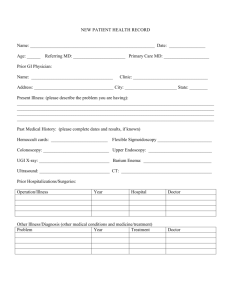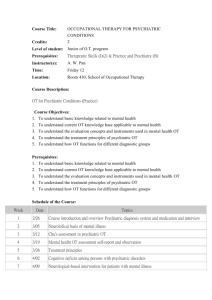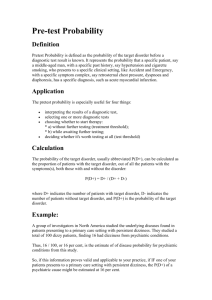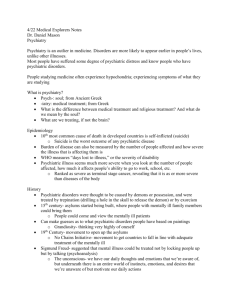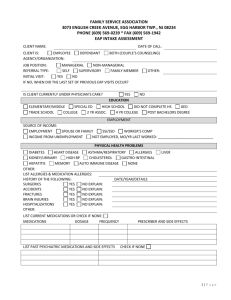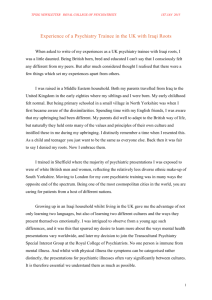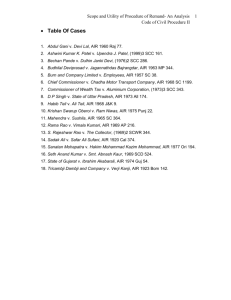Introduction Kenyahas about 50,000 prisoners, 21,000 of whom are
advertisement
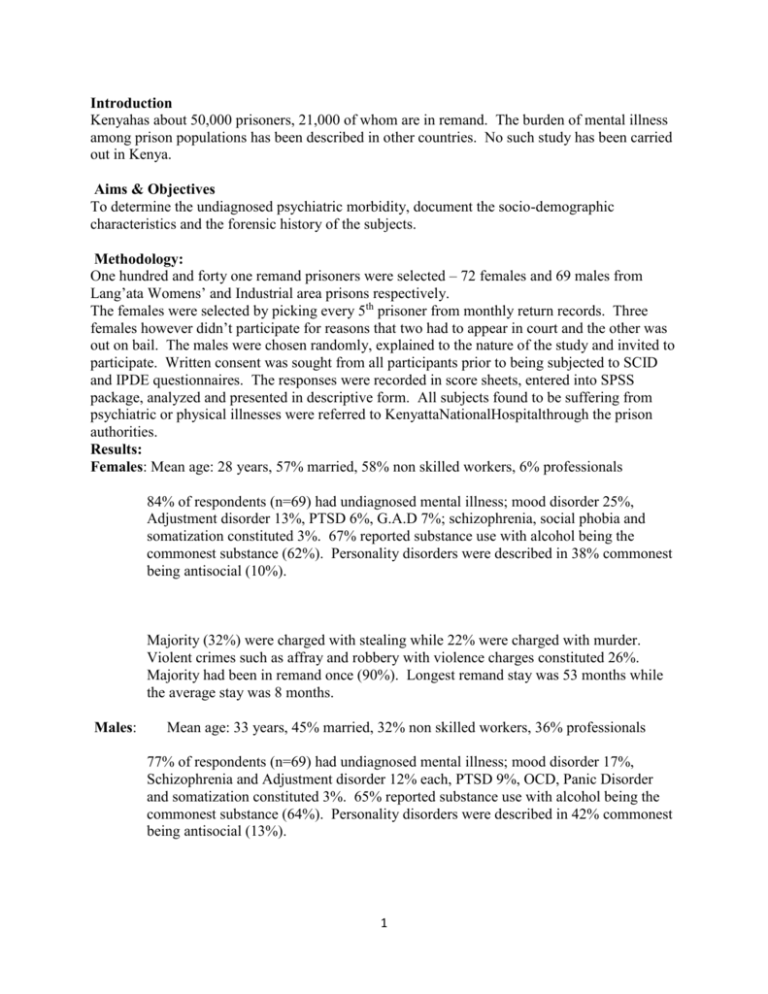
Introduction Kenyahas about 50,000 prisoners, 21,000 of whom are in remand. The burden of mental illness among prison populations has been described in other countries. No such study has been carried out in Kenya. Aims & Objectives To determine the undiagnosed psychiatric morbidity, document the socio-demographic characteristics and the forensic history of the subjects. Methodology: One hundred and forty one remand prisoners were selected – 72 females and 69 males from Lang’ata Womens’ and Industrial area prisons respectively. The females were selected by picking every 5th prisoner from monthly return records. Three females however didn’t participate for reasons that two had to appear in court and the other was out on bail. The males were chosen randomly, explained to the nature of the study and invited to participate. Written consent was sought from all participants prior to being subjected to SCID and IPDE questionnaires. The responses were recorded in score sheets, entered into SPSS package, analyzed and presented in descriptive form. All subjects found to be suffering from psychiatric or physical illnesses were referred to KenyattaNationalHospitalthrough the prison authorities. Results: Females: Mean age: 28 years, 57% married, 58% non skilled workers, 6% professionals 84% of respondents (n=69) had undiagnosed mental illness; mood disorder 25%, Adjustment disorder 13%, PTSD 6%, G.A.D 7%; schizophrenia, social phobia and somatization constituted 3%. 67% reported substance use with alcohol being the commonest substance (62%). Personality disorders were described in 38% commonest being antisocial (10%). Majority (32%) were charged with stealing while 22% were charged with murder. Violent crimes such as affray and robbery with violence charges constituted 26%. Majority had been in remand once (90%). Longest remand stay was 53 months while the average stay was 8 months. Males: Mean age: 33 years, 45% married, 32% non skilled workers, 36% professionals 77% of respondents (n=69) had undiagnosed mental illness; mood disorder 17%, Schizophrenia and Adjustment disorder 12% each, PTSD 9%, OCD, Panic Disorder and somatization constituted 3%. 65% reported substance use with alcohol being the commonest substance (64%). Personality disorders were described in 42% commonest being antisocial (13%). 1 Violent crimes such as affray and robbery with violence charges constituted 23%. Only 58% were in remand once (90%) while 3% were there for the fourth time (recidivists). Longest remand stay was 120 months while the average stay was 17 months. Correlations: Significant correlates with axis I disorder were past personal psychiatric history, family history of mental illness and suicidality. Those for axis II disorder were past personal psychiatric history, family history of mental illness, suicidality, history of childhood abuse and same gender relationships. Limitations: - Funding for the study was from researcher’s savings thus the study has to be done in prisons proximal to the city center. Past psychiatric history could not be verified from medical records, verbal report was relied on. Axis II diagnosis was based on respondents’ self report since no corroborative history was available from family or friends. Conclusions: From the study, the undiagnosed psychiatric morbidity was 84% (females) and 77% (males). This is lower than that described in the England& Walesstudy of 91%. A prevalence rate of 57% among remand prisoners in Ugandainterviewed within three days of their entry into prison. Respondents with past psychiatric history, those with family history of mental illness and those who were suicidal were more likely to have an Axis I disorder. Personal or family history of mental illness and history of child abuse in respondents made it more likely that they had a personality disorder. Recommendations: The presence of undiagnosed mental illness implies that staffing of correction facilities with mental health workers and training of custodial officers in mental health would be essential. Substance use was substantial and drug rehabilitation would be essential in management of offenders.There is need for screening of prisoners for mental illness prior to incarceration so as to recognize those who are mentally ill and plan for their treatment needs. 2

